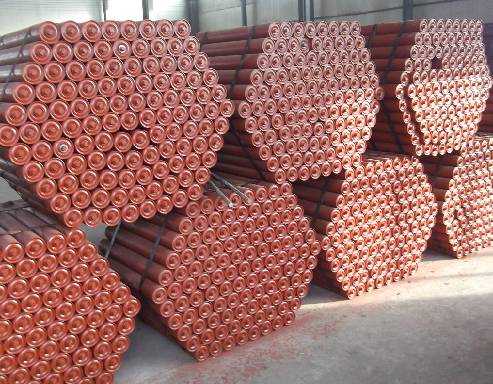 Afrikaans
Afrikaans  Albanian
Albanian  Amharic
Amharic  Arabic
Arabic  Armenian
Armenian  Azerbaijani
Azerbaijani  Basque
Basque  Belarusian
Belarusian  Bengali
Bengali  Bosnian
Bosnian  Bulgarian
Bulgarian  Catalan
Catalan  Cebuano
Cebuano  Corsican
Corsican  Croatian
Croatian  Czech
Czech  Danish
Danish  Dutch
Dutch  English
English  Esperanto
Esperanto  Estonian
Estonian  Finnish
Finnish  French
French  Frisian
Frisian  Galician
Galician  Georgian
Georgian  German
German  Greek
Greek  Gujarati
Gujarati  Haitian Creole
Haitian Creole  hausa
hausa  hawaiian
hawaiian  Hebrew
Hebrew  Hindi
Hindi  Miao
Miao  Hungarian
Hungarian  Icelandic
Icelandic  igbo
igbo  Indonesian
Indonesian  irish
irish  Italian
Italian  Japanese
Japanese  Javanese
Javanese  Kannada
Kannada  kazakh
kazakh  Khmer
Khmer  Rwandese
Rwandese  Korean
Korean  Kurdish
Kurdish  Kyrgyz
Kyrgyz  Lao
Lao  Latin
Latin  Latvian
Latvian  Lithuanian
Lithuanian  Luxembourgish
Luxembourgish  Macedonian
Macedonian  Malgashi
Malgashi  Malay
Malay  Malayalam
Malayalam  Maltese
Maltese  Maori
Maori  Marathi
Marathi  Mongolian
Mongolian  Myanmar
Myanmar  Nepali
Nepali  Norwegian
Norwegian  Norwegian
Norwegian  Occitan
Occitan  Pashto
Pashto  Persian
Persian  Polish
Polish  Portuguese
Portuguese  Punjabi
Punjabi  Romanian
Romanian  Russian
Russian  Samoan
Samoan  Scottish Gaelic
Scottish Gaelic  Serbian
Serbian  Sesotho
Sesotho  Shona
Shona  Sindhi
Sindhi  Sinhala
Sinhala  Slovak
Slovak  Slovenian
Slovenian  Somali
Somali  Spanish
Spanish  Sundanese
Sundanese  Swahili
Swahili  Swedish
Swedish  Tagalog
Tagalog  Tajik
Tajik  Tamil
Tamil  Tatar
Tatar  Telugu
Telugu  Thai
Thai  Turkish
Turkish  Turkmen
Turkmen  Ukrainian
Ukrainian  Urdu
Urdu  Uighur
Uighur  Uzbek
Uzbek  Vietnamese
Vietnamese  Welsh
Welsh  Bantu
Bantu  Yiddish
Yiddish  Yoruba
Yoruba  Zulu
Zulu Return Rollers for Efficient Conveyor Belt Systems and Applications
The Importance of Conveyor Belt Return Rollers
Conveyor systems are an essential component of modern material handling and manufacturing processes. They facilitate the efficient movement of goods across various stages of production and distribution, ensuring that operations run smoothly. Among the crucial components of these conveyor systems are return rollers, which play a vital role in maintaining optimal performance and extending the lifespan of the conveyor belt.
Understanding Return Rollers
Return rollers are the cylindrical components located beneath the conveyor belt that support the belt as it returns to its starting point. They are typically positioned at regular intervals along the return path, helping to guide the belt and ensuring it remains aligned. This is particularly important in heavy-duty applications where misalignment can lead to premature wear or even catastrophic failure of the system.
Key Functions of Return Rollers
1. Support and Stability Return rollers provide essential support to the conveyor belt. As the belt carries heavy materials, the return rollers help to evenly distribute the weight, preventing sagging and potential damage. This support is crucial for maintaining the integrity of the belt over time.
2. Belt Alignment Proper alignment of the conveyor belt is critical to its efficient operation. Return rollers assist in maintaining this alignment, reducing the risk of the belt drifting off its track. Misalignment can lead to increased friction, causing excessive wear and tear on both the belt and the rollers.
3. Reduction of Friction Friction is a major concern in conveyor systems, as it can hinder performance and increase energy consumption. Return rollers help minimize friction by providing a smooth surface for the belt to move over. High-quality rollers made from durable materials can significantly reduce the amount of energy required to move materials along the conveyor, contributing to overall operational efficiency.
4. Noise Reduction Another advantage of well-designed return rollers is their ability to reduce operational noise. The rollers are often equipped with noise-dampening features that minimize sound generated during the movement of the conveyor belt. This is particularly beneficial in environments where noise control is important, such as manufacturing plants and distribution centers.
Types of Return Rollers
Return rollers come in various designs and materials, each suited to different applications
. Common types includeconveyor belt return rollers

- Rubber Coated Rollers These rollers provide a high level of grip and are effective at reducing slippage, making them ideal for applications where the belt carries light to medium loads.
- Plastic Rollers Lightweight and resistant to corrosion, plastic return rollers are often used in environments exposed to chemicals or moisture. They offer a low-friction surface and are suitable for a wide range of applications.
- Heavy-Duty Steel Rollers For applications involving heavy loads or abrasive materials, heavy-duty steel return rollers offer exceptional durability and strength. These rollers can withstand the rigors of demanding industrial environments, ensuring reliable performance.
Maintenance Practices
To ensure the effective operation of return rollers, regular maintenance is essential. Some key practices include
- Inspection Periodically inspect the return rollers for signs of wear, misalignment, or damage. Timely detection of issues can prevent more significant problems down the line.
- Lubrication Keeping the bearings and moving parts of the return rollers lubricated can minimize friction and prolong their lifespan.
- Cleaning Dust and debris can accumulate on return rollers, impacting performance. Regular cleaning helps maintain their efficiency and ensures the smooth operation of the conveyor system.
Conclusion
Conveyor belt return rollers are a critical yet often overlooked component of conveyor systems. Their roles in supporting the belt, maintaining alignment, reducing friction, and decreasing noise levels contribute significantly to the efficiency and longevity of these systems. By understanding their importance and investing in proper maintenance, businesses can enhance the performance of their conveyor systems and reduce operational costs over time. In a world that increasingly relies on efficient material handling, the role of return rollers is more significant than ever.
-
Revolutionizing Conveyor Reliability with Advanced Rubber Lagging PulleysNewsJul.22,2025
-
Powering Precision and Durability with Expert Manufacturers of Conveyor ComponentsNewsJul.22,2025
-
Optimizing Conveyor Systems with Advanced Conveyor AccessoriesNewsJul.22,2025
-
Maximize Conveyor Efficiency with Quality Conveyor Idler PulleysNewsJul.22,2025
-
Future-Proof Your Conveyor System with High-Performance Polyurethane RollerNewsJul.22,2025
-
Driving Efficiency Forward with Quality Idlers and RollersNewsJul.22,2025





























